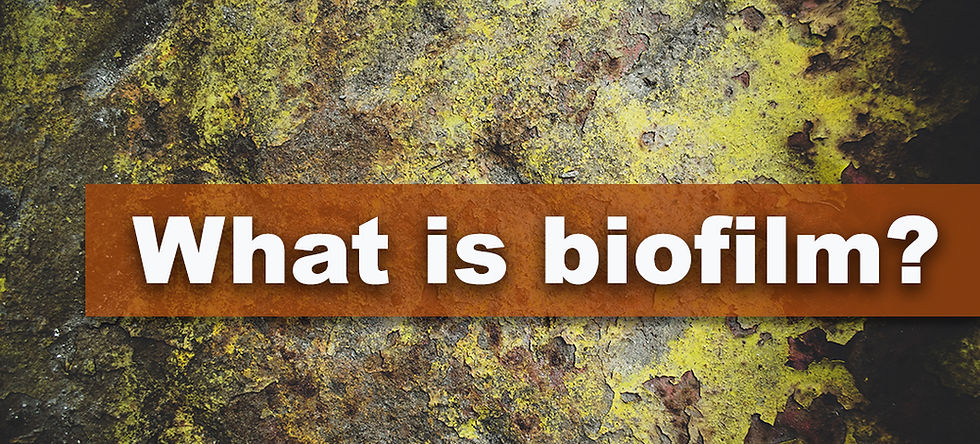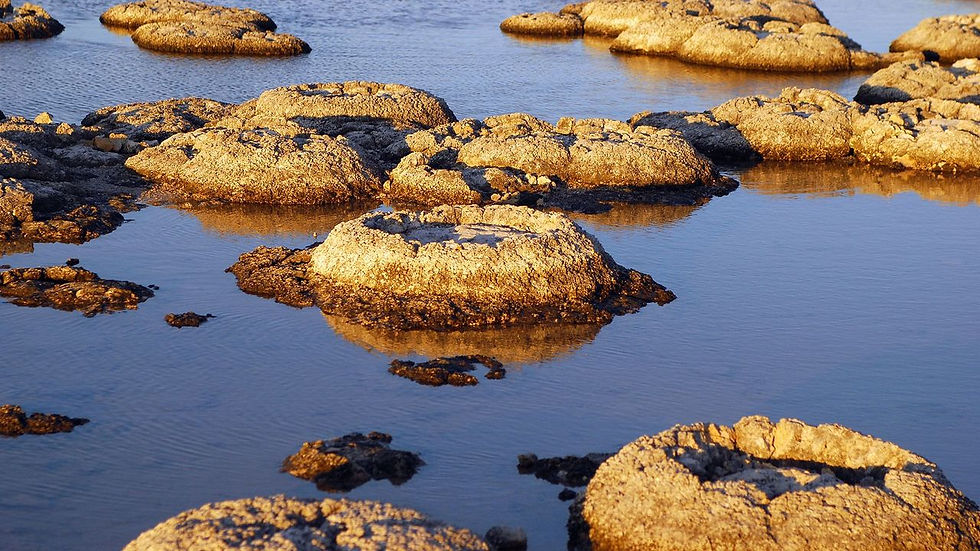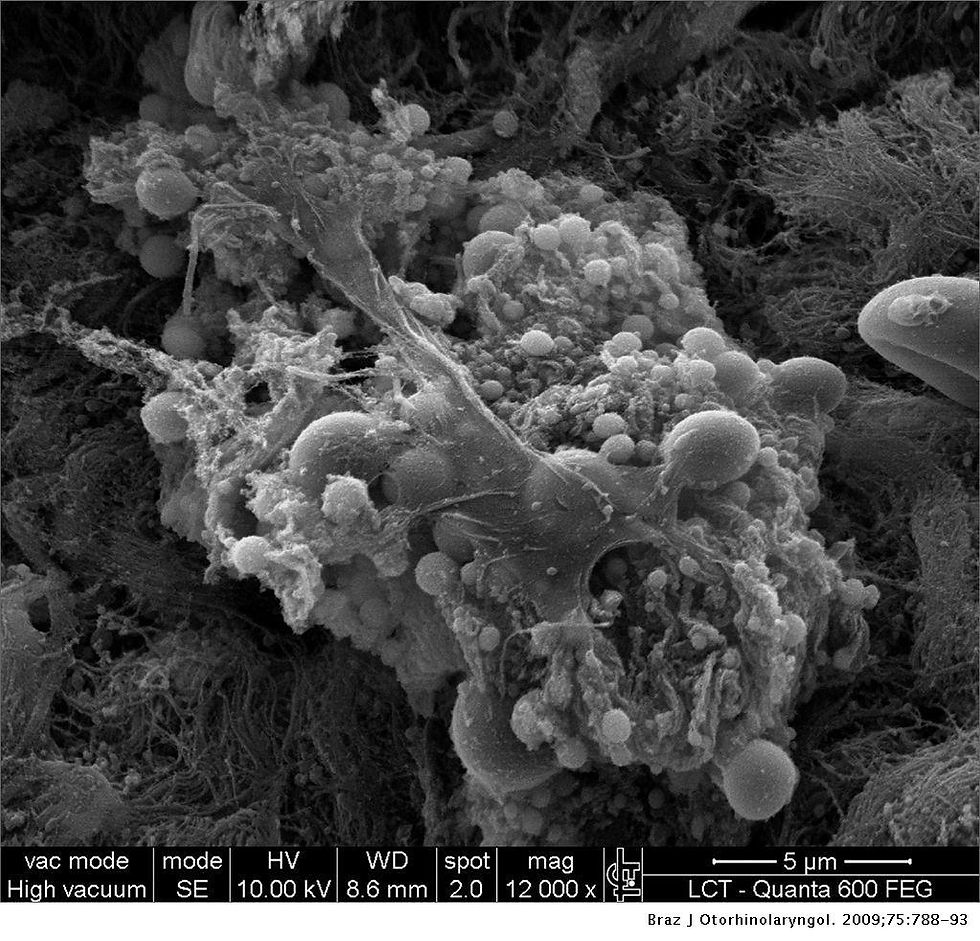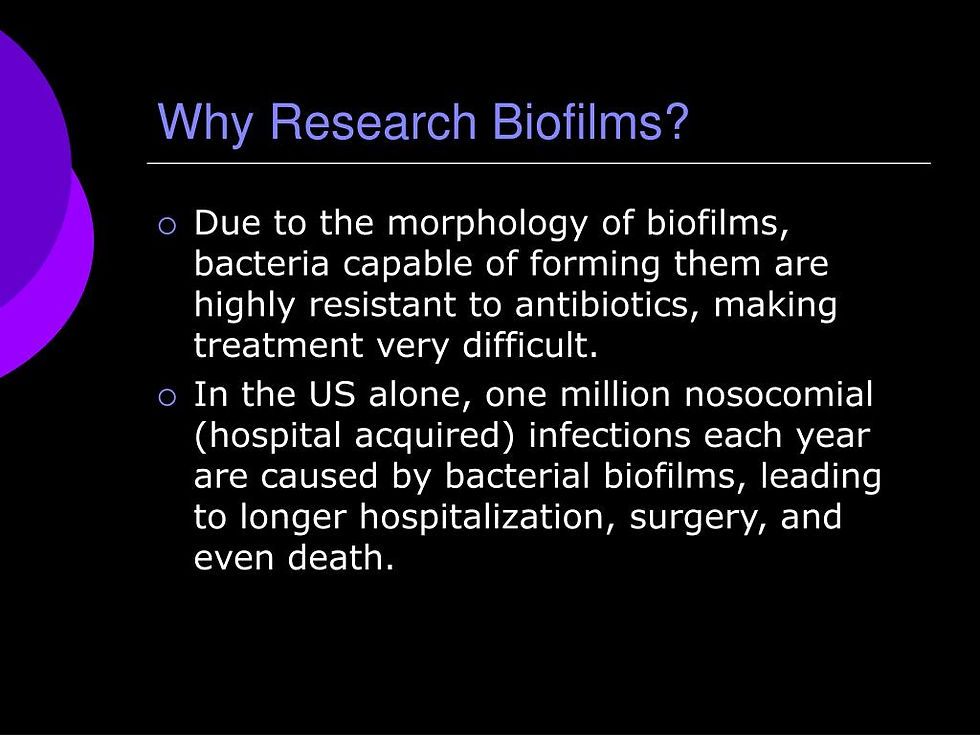
This is for you if you have gingivitis, get sinus infections, UTIs, vaginal infections, ear infections, chronic skin infections or any other frequent infection in your body.
Even if you don't get infections, this is for you too because it's just plain fascinating - a glimpse of how life on Earth came to be.
What Are Biofilms?
Little was known about biofilms until the early 1970s, when scientists began to understand the major impact biofilms have on our health. In the 50 years since then, considerable research has created a body of knowledge about how biofilms form, behave and respond to different treatments.
Here's some of what's known now:
"Biofilms are communal structures of microorganisms encased in a polymeric coating that form on both natural and abiotic surfaces and have been associated with a variety of persistent infections that respond poorly to conventional antibiotic chemotherapy.
"Biofilm forms when bacteria adhere to surfaces in moist environments by excreting a slimy, glue-like substance. Sites for biofilm formation include all kinds of surfaces: natural materials above and below ground, metals, plastics, medical implant materials—even plant and body tissue. Wherever you find a combination of moisture, nutrients and a surface, you are likely to find biofilm.
"A biofilm community can be formed by a single bacterial species, but in nature biofilms almost always consist of rich mixtures of many species of bacteria, as well as fungi, algae, yeasts, protozoa, other microorganisms, debris and corrosion products. Over 500 bacterial species have been identified in typical dental plaque biofilms. Biofilms are held together by sugary molecular strands, collectively termed “extracellular polymeric substances” or “EPS.” The cells produce EPS and are held together by these strands, allowing them to develop complex three-dimensional, resilient, attached communities. Biofilms can be as thin as a few cell layers or many inches thick, depending on environmental conditions." (Center for Biofilm Engineering, Montana State University, undated)
A Biofilm Discovery from 3.5 Billion Years Ago
Modern Day Stromatolites

In the primordial soup that became our planet, the formation of biofilms became the source of life on Earth. Some of the oldest known evidence of life on Earth are fossilized biofilms known as stromatolites. A group of stromatolites in Western Australia are thought to be 3.5 billion years old. Quite surprising since the oldest rocks ever found are only 3.8 billion years old!
Our planet is estimated to be 4.5 billions old so these Australian fossilized stromatolites are from the period when the continents were forming.These fossilized biofilms were produced by the activity of ancient cyanobacteria. (UCMP Berkeley, undated)
3.5 Billion Year Old Fossilized Stromatolite Biofilms Found in Western Australia

Problematic Biofilms That Grow in Humans

In humans, biofilms account for up to 80% of the total number of microbial infections according to the National Institute of Health - including endocarditis, cystic fibrosis, periodontitis, rhinosinusitis, osteomyelitis, non-healing chronic wounds, meningitis, kidney infections, prosthesis and implantable device- related infections. (Khatoon et al., 2018).
This represents a serious health problem.

Dental Plaque

Bacterial Biofilm in Chronic Sinusitis

Helpful & Dangerous Biofilms in the Body

Biofilms encase themselves inside a hard polymer shell, making them difficult to eradicate. Biofilm-forming bacteria have “a high rate of mutation that enables them to develop resistant mechanisms, and this, in turn, gives an opportunity for their genes to produce enzymes that inactivate the antibiotics or expel the antibiotics using efflux pumps…. Biofilm plays a critical role in the spread of antibiotic resistance.” (Abebe, 2020)
Biofilms That Protect Us From Disease
Some biofilms are helpful, protecting against disease. For example, the vagina is covered with a biofilm of lactobacilli which prevents colonization by dangerous (pathogenic) bacteria. A disruption of the vaginal biofilm can lead to infection.
Another example of a useful biofilm is a layer of probiotic (healthy) bacteria on the teeth, which prevents colonization by pathogenic bacteria. (Shaffer, 2024)
Maintaining that layer of good bacteria on your teeth is a very good reason not to use a mouthwash or toothpaste that claims to kill the bacteria in your mouth!
Biofilms in the gut are complex communities of microorganisms, including bacteria, fungi, and other microbes, that adhere to the surface of the intestinal lining and form a protective matrix known as a biofilm.
"Biofilms in the gut can have both positive and negative effects. On the positive side, they contribute to the development of healthy gut microbiota by providing a protective environment for beneficial bacteria. They can also help maintain the integrity of the intestinal barrier and modulate immune responses." (Gary K, 2023)
This is a Functional Medicine doctor's take on the role of biofilms in the body:
"Biofilms are the barriers that form around infections, tumours, injury and illness in the body to prevent their spread. In this sense, they protect us from disease. But these barriers can also prevent the immune system, medications and therapies from reaching these areas when they are needed, meaning that you won’t get better until the biofilms are addressed and eradicated.
"Most people haven’t heard of biofilms, but they are considered as the important reason for bacterial resistance and persistent infections and can have a significantly adverse effect on your health without intervention." (Cooper, 2022)
I'd wanted to include images of some of these protective biofilms but was unable to find any.
Some Biofilms Occurring in Nature
Lush biofilm in a Yellowstone Park
stream

Biofilm made by iron oxidizing bacteria in a well


Slimy biofilm on a rock
A lot has been discovered about biofilms in the last 50 years but there's still much more to learn.

Could you please leave a comment if you found this post interesting? It would be much appreciated & would help spread the word.
The COMMENT box is at the bottom of the page, below the REFERENCES.
REFERENCES
Abebe,G,M. (2020). The Role of Bacterial Biofilm in Antibiotic Resistance and Food Contamination. See:
Center for Biofilm Engineering, Montana State University. (undated). Biofilm Basics. See: https://www.biofilm.montana.edu/biofilm-basics/index.html
Cooper, J. (2022). What are biofilms and are they harmful? Advanced Functional Medicine. See: https://advancedfunctionalmedicine.com.au/biofilms/
Gary K. (2023). Biofilms-living communities that protect microbes from our immune system and therapies. See: https://naturalcompounder.com/biofilms-living-communities/
Khatoon, Z. et al. (2018). Bacterial biofilm formation on implantable devices and approaches to its treatment and prevention. Heliyon. See: https://www.ncbi.nlm.nih.gov/pmc/articles/PMC6312881/#:~:text=In%20humans%2C%20biofilms%20account%20for,kidney%20infections%2C%20and%20prosthesis%20and
Shaffer, C. (2024). Biofilms in Human Disease. See: https://www.news-medical.net/life-sciences/Biofilms-in-Human-Disease.aspx#:~:text=Another%20example%20is%20a%20biofilm,prevents%20colonization%20by%20pathogenic%20bacteria.
UCMP Berkeley. (undated). Cyanobacteria: Fossil Record. See: https://ucmp.berkeley.edu/bacteria/cyanofr.html
© Copyright 2024 Joan Rothchild Hardin. All Rights Reserved.
DISCLAIMER: Nothing on this site or blog is intended to provide medical advice, diagnosis or treatment.


Comments